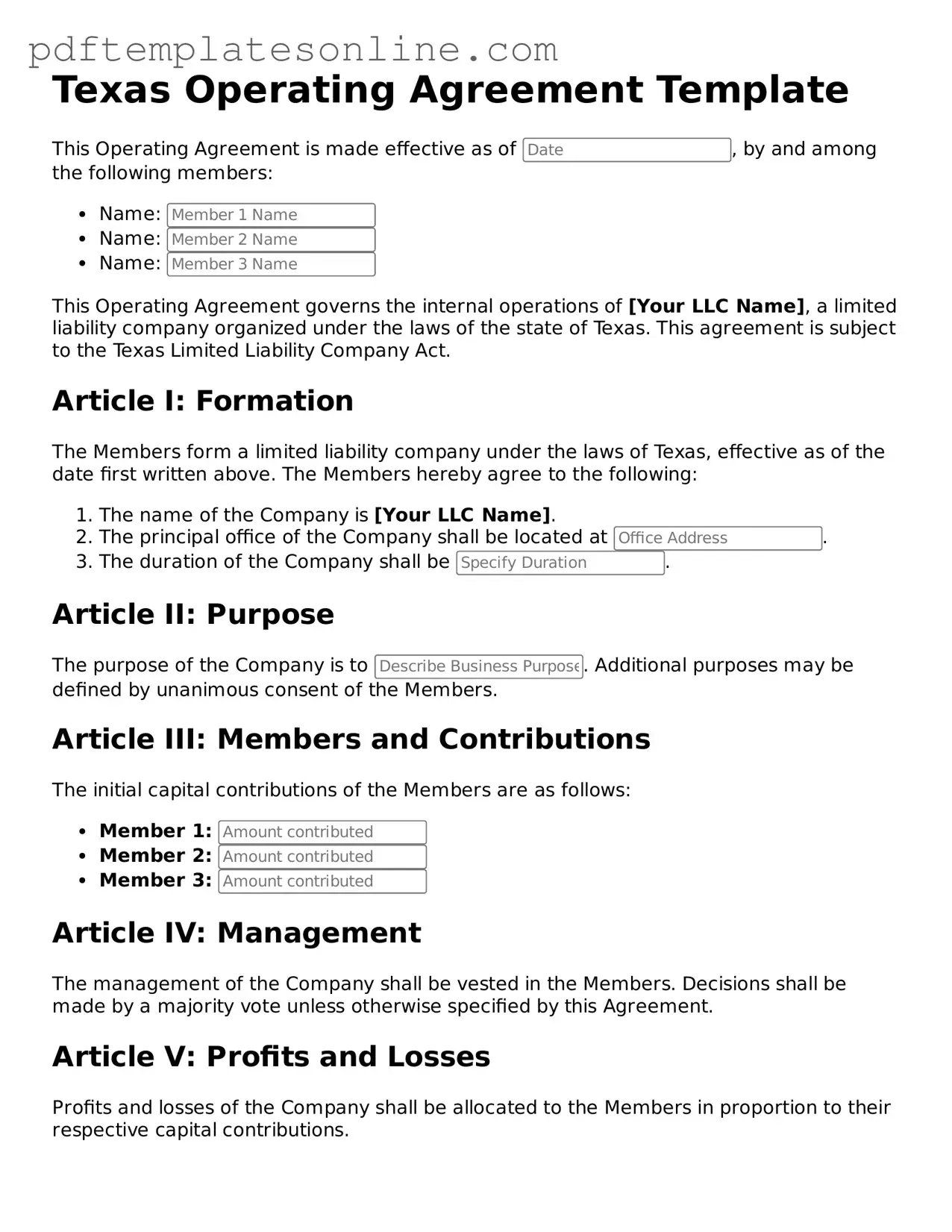Filling out a Texas Operating Agreement form can be a straightforward process, but many people make common mistakes that can lead to complications down the line. One frequent error is neglecting to include all members' names and addresses. This information is crucial for establishing clear ownership and responsibilities within the company. Omitting even one member can create confusion and disputes later.
Another mistake often seen is failing to define the roles and responsibilities of each member. Clarity is key in any business operation. Without clearly outlined duties, members may have differing expectations, leading to misunderstandings and potential conflicts. It is essential to specify who handles what to ensure smooth operations.
Many individuals also overlook the importance of detailing the decision-making process. An Operating Agreement should specify how decisions will be made—whether by majority vote, unanimous consent, or another method. Without this information, important decisions may become contentious, causing delays and frustration.
Additionally, some people forget to address how profits and losses will be distributed among members. This can lead to disputes when it comes time to share earnings. Clearly stating the distribution method in the agreement helps prevent misunderstandings and ensures all members are on the same page.
Another common oversight is not including a buy-sell agreement. This clause is vital for outlining what happens if a member wants to leave the business or if a triggering event occurs, such as death or incapacity. Without this provision, the remaining members may face challenges in managing the ownership transition smoothly.
Finally, failing to update the Operating Agreement can create problems as the business evolves. Changes in membership, roles, or business structure should be reflected in the agreement. Regular reviews and updates help maintain clarity and relevance, ensuring the document continues to serve its purpose effectively.
